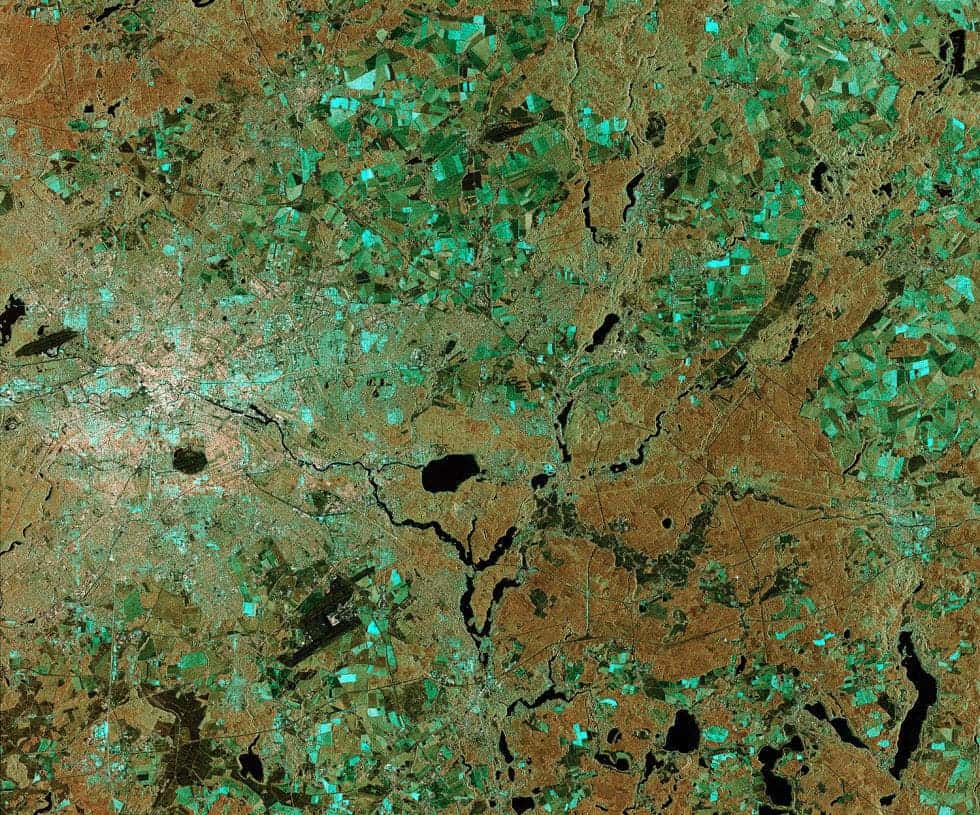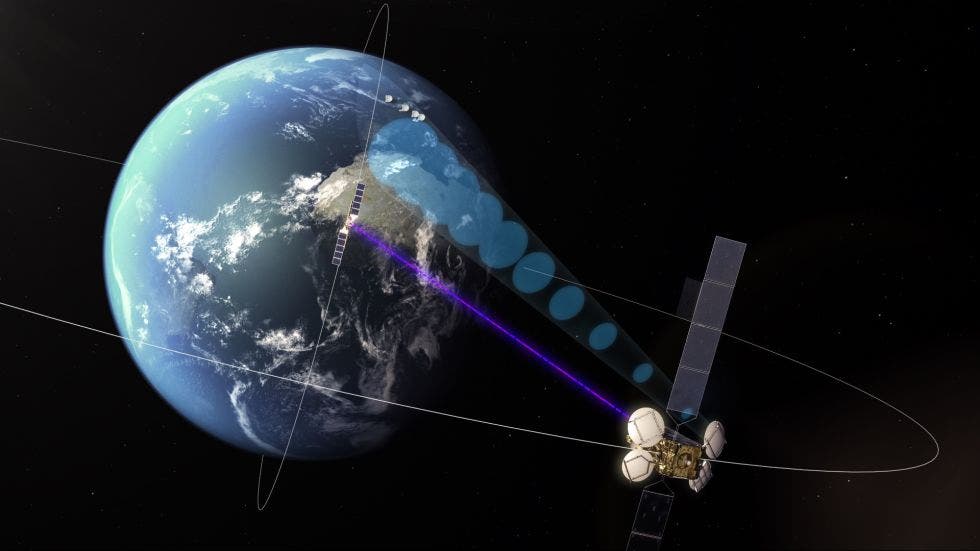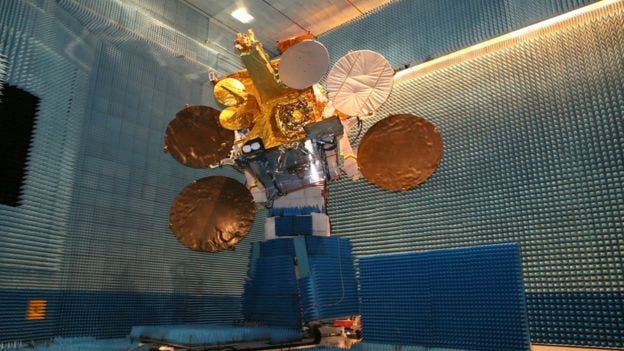Europe’s laser communication network has taken off! The first node of the space-based system was launched into orbit aboard a commercial Eutelsat broadcasting spacecraft. The European Data Relay System (EDRS) will relay vast volumes of imagery at very fast speeds, allowing researchers to download satellite pictures faster.

“It’s a kind of broadband network in space offering capabilities to transmit a large amount of data from Earth observation satellites down to Earth,” said Magali Vaissiere, director of the European Space Agency’s telecommunications and integrated applications division.
Working at a whopping 1.8Gbps, the link will be able to send an average of 50TB per day, enabling satellites and other craft travelling in low-Earth orbit (LEO), including the International Space Station (ISS) and even space drones, to send vast quantities of data back to ground with very little delay. The data transfer system will be about 90 times faster than a typical modern Internet connection, according to Evert Dudok, head of communication, intelligence and security at Airbus Defense and Space.
The project has been in development for over 10 years as getting satellites to exchange data via laser is no easy feat. It requires perfect programming and engineering, as any tiny flaw could have devastating consequences.
“It is like if you were driving a sports car in Europe, and you were pointing your beam at a 2 euro coin in New York,” Dudok said. “This is where the trick comes in. You have to point it very accurately, and you have to follow the low Earth orbit observation satellite otherwise you cannot keep the connection up.”

Fast data transfer from space is no easy matter. Currently, one of the limiting factors in monitoring Earth on a large scale is data transfer.
“EDRS is the tool that will make Earth observation on such a scale a manageable proposition,” Vaissiere said in a Jan. 15 press conference. “The maritime sector is the one currently crying out loudest for more real-time data. For example, some important shipping routes go through the North Pole region, where thick ice flows can cause damage to cargo and vessels and even threaten human life.
“It’s also an environment which is on constant motion, so data that is two days old is not only unhelpful, it could even be unsafe,” Vaissiere said. “EDRS is supposed to make this data accessible quickly.”

The main task of the system will be to transmit environmental data, which will benefit security agencies, maritime operators, businesses, farmers, scientists and European citizens; environmental monitoring is one of the main scientific goals of the European space program.
“EDRS is made to serve Europe,” Vaissiere told reporters Jan. 15. “Time critical data is not just of use to commercial operators. The old ways of transmitting data are fast becoming outdated, and this is reflected in the demands of new users for new services.”






